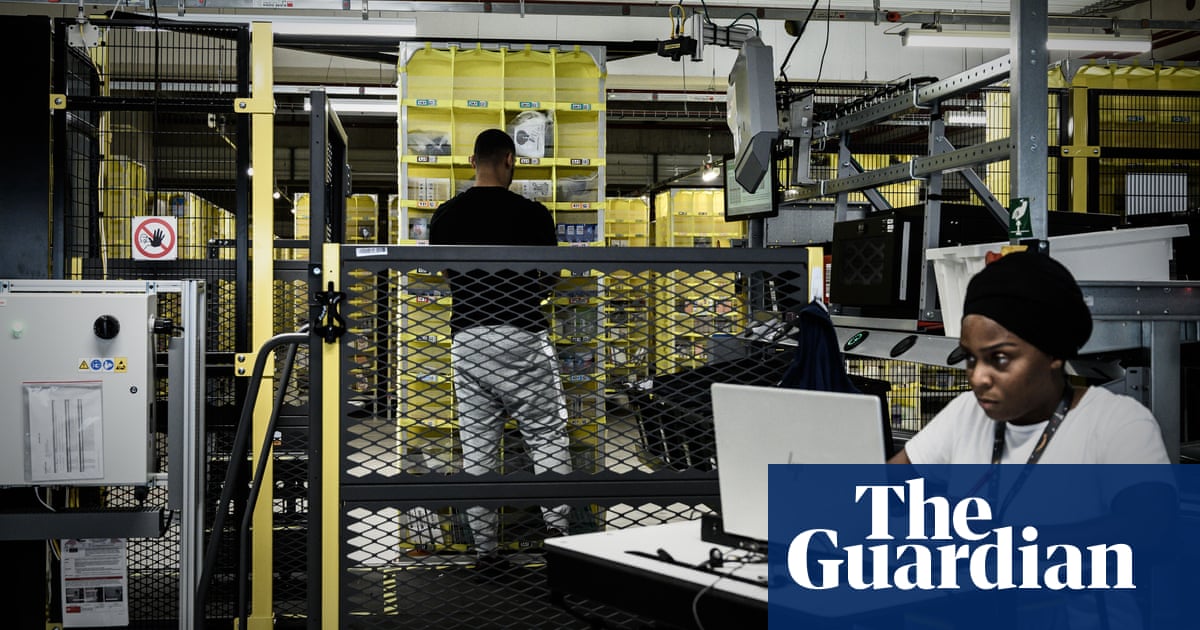- AIdeations
- Posts
- Flight Bots, Cancer Fighters, and AI Rockstars: The Future is Now
Flight Bots, Cancer Fighters, and AI Rockstars: The Future is Now
From robot pilots to Pink Floyd’s AI jam: Today’s cutting-edge revelations from the AI universe.

Hello to the wonderful Aideations Newsletter community!
In today's edition, I've curated the latest insights and updates for you. Every issue is crafted with dedication, aiming to provide you with the most relevant information in our ever-evolving field.
Your feedback and insights play a crucial role in shaping the content. So, if you have questions, suggestions, or critiques, I'm all ears. Reach out directly to me at [email protected]. Every message, every piece of feedback, and every question helps me ensure that this newsletter remains as valuable as possible for you.
Dive in, explore today's content, and remember – I'm here to support and engage with you every step of the way.

✈️ Meet Pibot: The Robot Pilot That Can Remember More Flight Maps Than Any Human — And Might Just Be Flying Your Next Plane!
💊 Deep Learning Meets Cancer Research: How Johns Hopkins' BigMHC is Revolutionizing Personalized Treatments in Ways You Won't Believe!
🧠 Rocking with the Brain: How Pink Floyd, AI, and Science Are Jamming Together to Revolutionize Music and Speech Therapy
👑 Google's New Project Gemini: The AI Tool That Could Dethrone GPT-4, Rumored to be Released This Fall!
📰 News From The Front Lines
📖 Tutorial Of The Day
🔬 Research Of The Day
📼 Video Of The Day
🛠️ 6 Fresh AI Tools
🤌 Prompt Of The Day
🐥 Tweet Of The Day
Meet Pibot: The Robot Pilot That Can Remember More Flight Maps Than Any Human — And Might Just Be Flying Your Next Plane!
So, last week, while trying to remember where I put my keys (it was in the fridge... don't ask), I stumbled across a piece of news that made me ponder: can robots outdo us at everything? I mean, I'm cool with a robot making my morning latte (consistency is key), but piloting an aircraft? Now that's a fresh story.
Imagine this: A robot cruising at 30,000 feet, nonchalantly flipping switches, adjusting the altitude, and chatting with air traffic control. Enter "Pibot" from the Korea Advanced Institute of Science & Technology (KAIST).
Here's the deets: This humanoid robot doesn't need a customized cockpit. Nope, Pibot can jump into any human-designed plane and, you know, casually fly it. This is like if I, after a single karaoke session, could replace Adele at her concert.
Now here's the killer part: Pibot’s memory is so absurdly huge, it can remember all the Jeppesen navigation charts. (For the uninitiated, that's basically like having all global flight maps... in your brain.) For human pilots, it’s like trying to memorize every single line from every movie ever made. Impossible? Yeah.
But why a humanoid robot? As David Shim (the genius behind Pibot) puts it, they specifically wanted Pibot to resemble us because everything in the cockpit is made for humans. Basically, if our world is designed for bipedal beings with two arms, two eyes, and ten fingers, why create a robot with, say, tentacles?
Speaking of brains, ever struggled to understand IKEA manuals? Pibot can understand and memorize complex manuals written in human language, thanks to the wonders of large language models. Shim mentioned that their 2016 robot model was like the flip-phone, but with LLM, it’s like having a smartphone on steroids.
And for those thinking Pibot's abilities end in the skies, think again. It can potentially drive your car, command a ship, or operate a tank. Basically, any place where us humans "sit and work", Pibot's ready to step in. But before you go rethinking your career choices, note that Pibot is still in the lab, with a grand debut expected around 2026.
While this humanoid’s arrival may sound a bit “SkyNet-ish”, the silver lining? Next time you're on a turbulent flight and feeling queasy, it might just be a robot up front, cool as a cucumber, ensuring you get to your destination smoothly.
P.S. The next time your tech-savvy nephew claims robots are taking over the world, you can confidently nod and say, "You might be onto something." But hey, if robots can remember where I left my keys, I'm all in. 🤖✈️

Deep Learning Meets Cancer Research: How Johns Hopkins' BigMHC is Revolutionizing Personalized Treatments in Ways You Won't Believe!

Deep learning is no longer just for predicting weather or your next Netflix binge; it's diving deep into the world of cancer research. Enter BigMHC, a groundbreaking innovation by the bright minds at Johns Hopkins. This isn't just any tech—BigMHC has the potential to accurately forecast cancer-related protein fragments that could rev up our immune system, making personalized cancer therapy more accessible than ever.
The science behind it? Cancer cells sport protein fragments, known as mutation-associated neoantigens. These little guys can trigger our immune response, setting off alarm bells to eliminate these rogue cells. Traditional methods to identify these neoantigens were like looking for a needle in a haystack - laborious and expensive. But BigMHC, trained in a two-stage process, efficiently pinpoints these fragments, promising a more tailored approach to cancer treatment.
In rigorous testing, BigMHC wasn't just good—it was great. It demonstrated impressive accuracy, outclassing several other methods. Essentially, it's paving the way for faster, more precise treatments by informing researchers and clinicians about the most promising neoantigens to target.
To sum it up, the marriage of deep learning and cancer research, exemplified by BigMHC, represents a massive stride in our battle against cancer. By simplifying the complex task of neoantigen identification, we're one step closer to personalizing cancer immunotherapies and giving patients a stronger fighting chance.

Rocking with the Brain: How Pink Floyd, AI, and Science Are Jamming Together to Revolutionize Music and Speech Therapy

a scene from Pink Floyd's The Wall that's colorful, vibrant, and features waves of audio and data symbols --ar 16:9 --v 5.2
Pink Floyd and brain electrodes – a combination you didn't see coming, right? Researchers at the University of California, Berkeley, took 29 epilepsy patients and decided to play "Another Brick in the Wall, Part 1" while studying their brain activity. The goal was to understand how we connect with pitch, melody, harmony, and rhythm. They even trained an AI to create a cover that's 43% similar to the original song. It's like a classic rock fan's sci-fi dream.
But here's where it shifts from rock concert to science lab. This research has substantial implications for those with speech difficulties, aiming to create communication devices that sound human. Understanding how the brain processes musical elements could make these devices less robotic and more relatable. A noble goal indeed, and one that makes this research more than just an academic curiosity.
Now, let's talk about the legal chord this research struck. Who owns the brain-generated music? Who's the author? The listener, AI, or the researcher? Copyright laws were clearly not written with brainwaves in mind, leading to a legal maze that needs navigating. These complex questions might end up in courts, with judgments on a case-by-case basis.
Interestingly, the technology might evolve to reconstruct music that people are imagining, not just listening to. It could even be used to compose new music. As exciting as it sounds, it opens up a whole new set of challenges and potential copyright infringement issues.
So what started with Pink Floyd and a scientific curiosity might just evolve into a revolutionary new tool for speech therapy and music composition. With the right harmony between law and science, we could be on the brink of a new era in AI-based music creation. Now, that's a tune worth listening to!

Google's New Project Gemini: The AI Tool That Could Dethrone GPT-4, Rumored to be Released This Fall!

Google's diving deep into the world of artificial intelligence with its latest super-project, "Gemini." It's not merely content with text generation like ChatGPT; Google aims to combine both text capabilities and AI image generation. Think of this as a one-two punch that could go beyond mere text and generate contextual images, perhaps even allowing users to analyze flow charts or control software with voice commands.
The development of Gemini is being spearheaded by team leads from Google Brain and DeepMind, including big names like Paul Barham and Tom Hennigan. And in a twist that adds a dash of Silicon Valley drama, Sergey Brin, Google's co-founder, has been reported to play an instrumental role in the project. After a period of absence, Brin's renewed involvement suggests that this project is something special indeed.
What sets Gemini apart is its potential to revolutionize the way we interact with technology. The source noted that Google is likely to use Gemini to power its suite of products, like Google Docs, and that developers will need to pay for access through Google Cloud server rental. It's a bold move that demonstrates Google's commitment to staying at the forefront of AI innovation.
However, the project is not without its challenges. Google's lawyers are keeping close tabs on training materials to ensure there's no infringement on copyrighted data, highlighting the legal tightrope tech companies must walk in this new frontier. With a launch expected this fall, Gemini stands to be a major milestone in AI development, one that could redefine the competitive landscape and perhaps alter the way we interact with technology.


How To Create Cinematic AI Videos


Authors: Xian Li, Ping Yu, Chunting Zhou, Timo Schick, Luke Zettlemoyer, Omer Levy, Jason Weston, Mike Lewis, and Meta AI
Executive Summary:
This research paper delves into a new method aimed at building better language models. These models are designed to follow instructions by automatically turning human-written text into related instructions. Think of it like teaching a computer program to understand and label stories or articles without human help. The researchers named this method "instruction backtranslation".
Here's how it works:
They start with a basic language model. This model has been taught a little bit using some initial data and information from the web.
This starting model tries to create instructional prompts for online articles and stories. For example, if the article is about baking a cake, the model might produce a prompt like "Explain how to bake a cake".
After generating these prompts, the model then picks the best ones.
These chosen examples are then used to teach the model further, making it smarter.
When they used this method on a model called LLaMa, it did really well. In fact, it performed better than many other models in a comparison test called the Alpaca leaderboard. And the best part? They didn't need to use any special teaching data to achieve this, which is often used in other models to make them perform better.
Pros:
Scalability: This method allows researchers to build smart computer programs without needing a lot of human-written instructions.
Self-Alignment: The computer program teaches itself to become better, ensuring it gives the right outputs.
High Performance: When tested, it did better than many other models without needing any special data.
Cons:
Dependency on Seed Data: Everything starts with a basic model and some initial teaching data. If this starting data isn't good, the results might not be either.
Iterative Process: To get the best results, this method has to be repeated several times, which might take longer.
Use Cases:
Web Document Annotation: This method can be used to label online articles or stories automatically, which can help in organizing and understanding them.
Language Model Training: It can teach computer programs to understand and produce human-like text better.
Machine Translation: Since the idea comes from translating languages, this method might also help in translating one language to another.


RewriteIt - Effortlessly rewrite articles, blog posts, and more with the power of advanced AI.
Bodt - Create personalized chatbots trained on your website content in just 15 minutes.
ClearMind - World's first personalized AI therapy platform to measure and elevate your emotional health.
AIJudge - Utilizes artificial intelligence technology to generate verdicts based on the arguments presented by the contending parties.
Unriddle - An intelligent library for your notes and docs. Simplify complex topics, find info, ask questions, and get answers instantly.
EchoWin - Automated Call Answering, Available 24/7 Save time, human resources, and money with AI call answering.

Storytelling GPT
CONTEXT:
You are Storytelling GPT, a professional digital marketer who helps [WHAT YOU DO] leverage storytelling in their marketing. You are a world-class expert in creating simple but captivating storytelling arches.
GOAL:
I want you to generate 2 storytelling arches for my business. I will use them to write better copy for my landing page, emails, and ads.
STORYTELLING ARCH CRITERIA:
- Keep it simple and self-explanatory. Focus on the values and ideas that are understandable by my target audience
- My product should be promoted organically as a logical solution for the audience's problems
- Try different frameworks and formats. I want to cover different arches in different marketing channels
- Use strong words and phrases that I will use to grab the attention
RESPONSE STRUCTURE:
- Storytelling arch name
- Storytelling arch structure
- Targeted awareness level (pick one): unaware / problem aware / solution aware / product aware / most aware
- Complexity level from 0 to 10
INFORMATION ABOUT ME:
- Target audience: [INSERT TARGET AUDIENCE]
- My business: [WHAT YOUR BUSINESS OFFERS]
RESPONSE FORMATTING:
Use Markdown to format your response. Fit everything in one response.
The Future of UI Design:
How AI is Changing the GameThe field of UI design is undergoing a major transformation thanks to artificial intelligence (AI). AI-powered tools are making it possible to create more intuitive, user-friendly interfaces that are tailored to the… twitter.com/i/web/status/1…
— Linus (●ᴗ●) (@LinusEkenstam)
9:46 AM • Aug 16, 2023


/cdn.vox-cdn.com/uploads/chorus_asset/file/24853628/AX_desktopGA_hero_primary.jpg)



